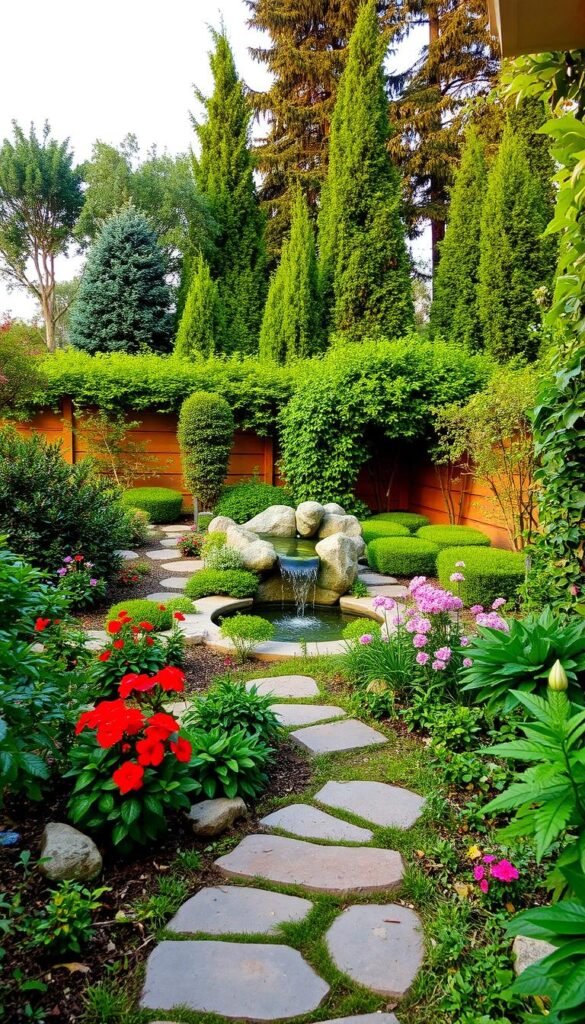Transforming a cozy outdoor area into a functional retreat might seem tricky, but it’s all about working with what you’ve got. Whether you’re dealing with narrow side yards or oddly shaped plots, smart landscape design can turn even the most compact areas into inviting extensions of your home. Our team specializes in crafting personalized solutions that blend beauty with practicality, proving that size doesn’t limit potential.
You’ll find that well-planned green spaces do more than just look pretty—they can boost your mood and even increase property value. Studies show thoughtful layouts reduce stress by up to 60% while adding 5-15% to home worth. This makes your outdoor zone an investment in both relaxation and resale appeal.
Discover how professionals approach tight spaces by focusing on vertical elements, multipurpose features, and strategic plant choices. Want inspiration? Check out these unique ways to decorate your outdoor using clever storage benches, hanging gardens, and repurposed materials.
By breaking your yard into distinct zones—like a lounging corner beside a compact herb garden—you create the illusion of more room. The right layout lets you entertain guests, grow fresh herbs, and unwind after work, all without feeling cramped. Ready to reimagine your slice of nature?
Set Your Outdoor Priorities
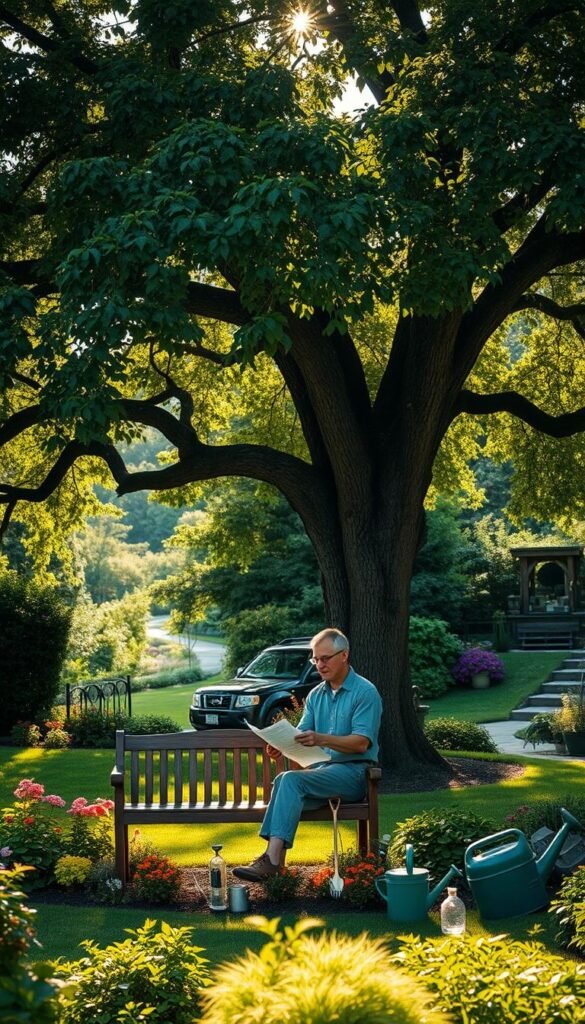
Before picking plants or patios, defining your needs shapes the entire project. Start by listing activities you’ll use daily versus occasional wants. This clarity prevents overcrowding and ensures every square foot serves a purpose.
Identify Your Must-Have Features
Grab sticky notes and write down non-negotiables. Is Friday pizza night on the patio essential? Do kids need turf for cartwheels? Separate practical needs from aspirational ideas. A foldable dining set might beat a permanent barbecue station if space is tight.
| Priority Level | Features | Considerations |
|---|---|---|
| Essential | Dining area | Seats 4+ people |
| Important | Herb garden | Vertical planters save space |
| Optional | Fire pit | Requires 10′ clearance |
Rank Desirable Elements for Maximum Impact
Compare your wishlist against available room. Could string lights double as decor and task lighting? Might a bench with hidden storage replace separate seating and shed? Use this ranking system:
1. Daily-use items first
2. Multi-functional pieces next
3. Seasonal accents last
Remember to ask family members for input during weekend chats. Their needs might surprise you – like needing open turf for yoga mats more than flower beds. Smart landscape design thrives on these insights.
Plan a Functional Layout with Smart Zoning
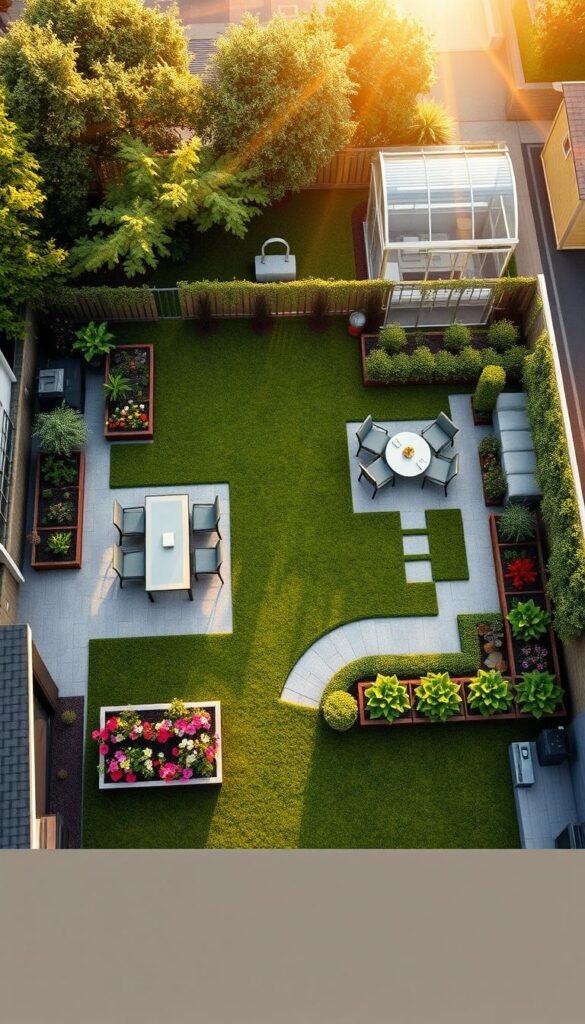
Crafting an efficient layout starts with understanding how you move through your outdoor space. Professionals often begin by sketching foot traffic patterns—where people naturally walk from your door to seating areas or storage spots. This approach prevents wasted square footage and ensures every inch serves a purpose.
Map Traffic Flow and Use Areas Efficiently
Imagine your yard as a series of connected pathways. Keep main walkways at least 3 feet wide for comfortable movement, and avoid placing garden beds or furniture where they’ll create bottlenecks. Curved paths often feel more spacious than straight lines, especially in narrow areas.
Strategic placement matters. Position high-traffic zones like grilling stations near your kitchen door, while quiet reading nooks work better in tucked-away corners. Explore these innovative small backyard ideas to see how others balance practicality with style.
Create Distinct Outdoor Zones
Define areas without walls using visual cues. An outdoor rug under lounge chairs instantly marks a relaxation zone, while raised planters can separate dining spaces from landscape design features. Try these simple dividers:
- Low hedges in decorative pots
- String lights draped between posts
- Subtle level changes using deck platforms
Keep zones connected through repeating colors or materials. Matching cushion fabrics between seating areas or using similar stone textures creates harmony. Learn how to maximize your garden’s potential by blending beauty and function in every corner.
Blend Indoor-Outdoor Living Seamlessly
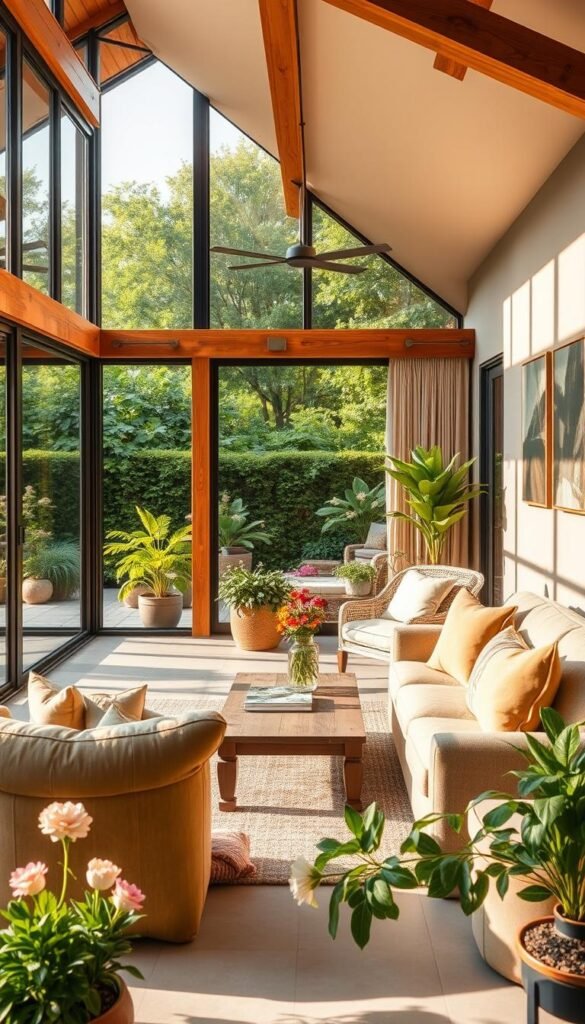
Your home doesn’t end at the back door—it flows into your outdoor sanctuary. By mirroring interior details outside, you craft a unified environment that feels both spacious and intentional. This approach makes your backyard an extra living room where fresh air becomes part of daily life.
Utilize Doorways and Large Windows
Replace solid exterior doors with glass-paned French styles or sliding panels. These act as giant picture frames showcasing your outdoor space while flooding rooms with sunlight. Position furniture near these openings to create sightlines that pull the eye outward.
Continue indoor flooring materials onto patios or decks for visual flow. Porcelain tiles work well outdoors, while wood-look composite planks bridge cozy interiors with nature. If matching isn’t practical, choose complementary textures that share similar tones.
Cluster potted plants near entryways to soften transitions. A trio of olive trees in weathered urns beside your kitchen door ties the design together. Add weather-resistant cushions in colors matching your sofa for instant cohesion.
Extend evening usability with layered lighting. Install dimmable sconces above exterior doors and weave solar lanterns through nearby shrubs. This glow maintains connection after dark while highlighting your favorite home features.
Enhance Perception with Visual Tricks
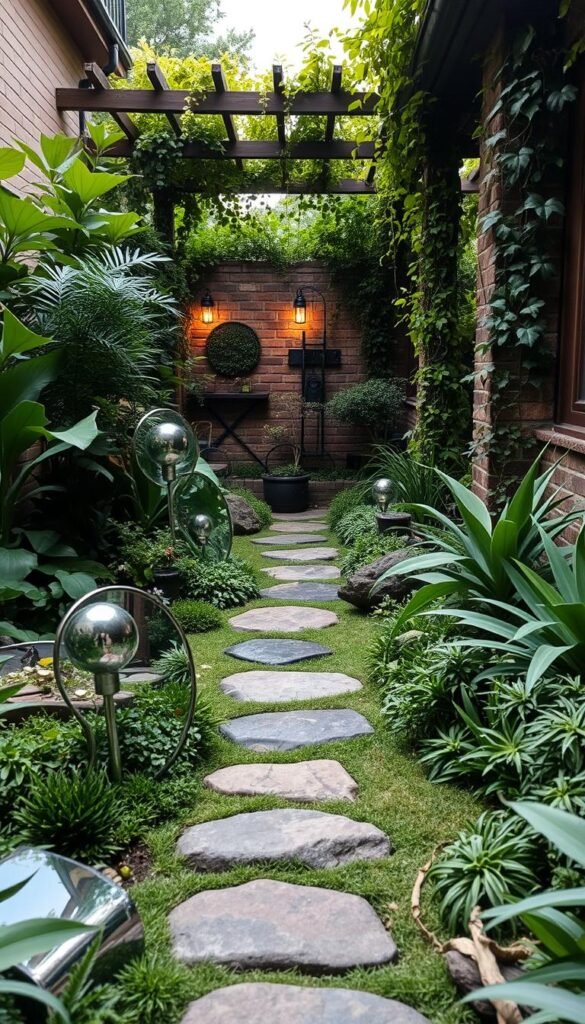
Your outdoor area can feel twice its size with clever visual strategies that guide the eye. Simple adjustments to sightlines and boundaries create instant depth, transforming cramped corners into airy retreats.
Open Lines and Unobstructed Sightlines
Remove physical barriers that chop up your space. Railings around decks often block views—swapping them for glass panels or removing them entirely stretches sightlines. This makes your backyard feel connected rather than divided.
Define garden beds with crisp edges using stone borders or metal strips. Clean lines between grass and planting zones create order, tricking the eye into perceiving more room. Pair this with curved pathways to soften angles while maintaining flow.
Mirrors amplify light and depth when placed strategically. Position them near lush greenery or container gardening ideas to reflect textures without overwhelming. Transparent furniture works similarly, allowing views to pass through instead of stopping at bulky objects.
Color choices matter. Lighter tones recede visually, making walls feel farther away. Repeat accent hues across your outdoor space to unify zones—a blue planter here and matching cushions there create rhythm without clutter.
Scale furnishings to match your area. Slim-profile chairs and narrow tables leave breathing room. Tall, slender plants draw eyes upward, emphasizing vertical space over horizontal limits. Your home’s exterior becomes part of the design when these elements work together seamlessly.
Keep It Simple for a Clutter-Free Space
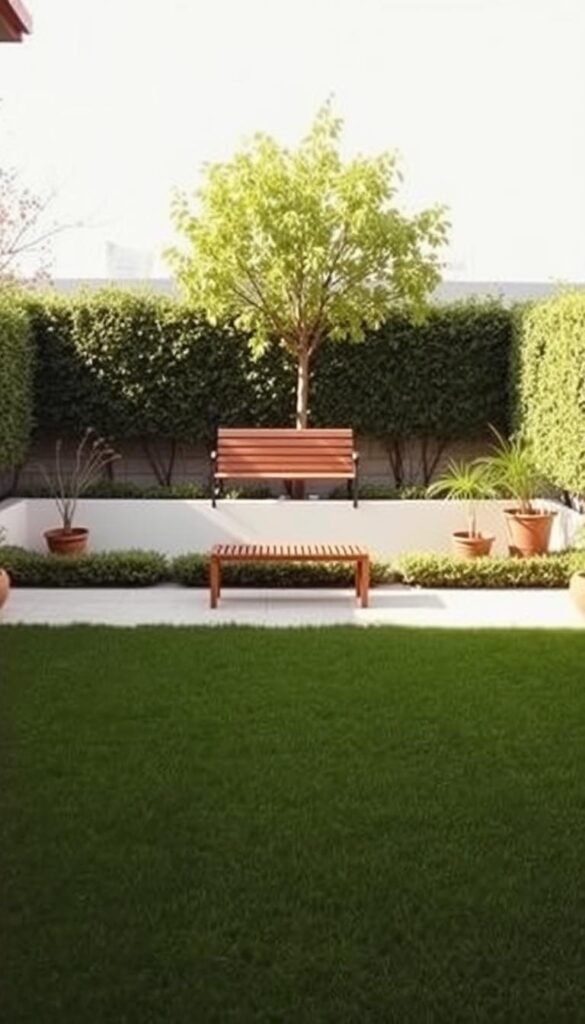
Ever feel like your outdoor area looks more chaotic than charming? Less truly becomes more when working with compact layouts. By narrowing your focus to 2-3 complementary materials and repeating them throughout your backyard, you create rhythm instead of randomness.
Choose one hero element as your anchor—like a sleek stone patio—then build around it. “Simplicity isn’t about less—it’s about intentional choices,” notes landscape designer Mara Halpern. Stick to three plant varieties maximum, selecting foliage with similar textures or bloom times for harmony.
Multi-tasking pieces help make every inch count. A bench with hidden storage doubles as seating and tool organization. Slim planters can divide zones while housing herbs. This approach reduces visual noise while boosting functionality.
Keep surfaces clear with smart storage solutions:
- Built-in compartments under seating
- Wall-mounted tool racks behind foliage
- Waterproof deck boxes disguised as side tables
Regular maintenance preserves your design’s clean lines. Schedule monthly “edit days” to remove unused items and trim overgrown plants. Assign specific homes for cushions, toys, and gardening tools—out of sight but within reach.
When every element serves purpose and beauty, your home’s exterior becomes a calming retreat rather than a cluttered catch-all. This thoughtful approach lets you enjoy your space instead of constantly managing it.
Small Backyard Garden Design: Creative Solutions for Limited Space
Don’t let square footage dictate your outdoor dreams. Even the most compact area can become a personalized retreat with thoughtful planning. Many homeowners are surprised to learn basic upgrades like fresh plantings or decorative mulch start around $300—a budget-friendly way to refresh your space without major construction.
For those wanting more elaborate features, costs rise gradually. Adding ambient lighting or vertical planters might run $1,500-$3,000, while custom stonework or pergolas often reach $5,000+. The key? Focus on changes offering dual benefits. A bench with hidden storage beautifies your backyard while reducing clutter—maximizing both function and style.
See how others achieve smart backyard transformations using tiered planters and foldable furniture. These solutions prove you don’t need endless room to create flow between dining zones and relaxation nooks.
Remember: every dollar should serve your lifestyle. Start with high-impact, low-cost updates like container gardens or paint refreshes. As your home evolves, add pricier elements that match how you actually use the space. With this approach, your outdoor oasis grows alongside your vision—one intentional choice at a time.

